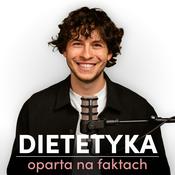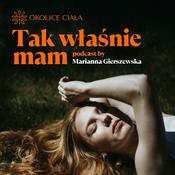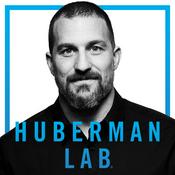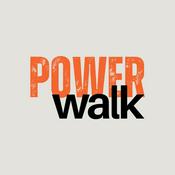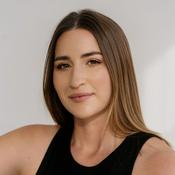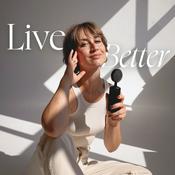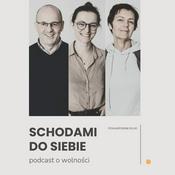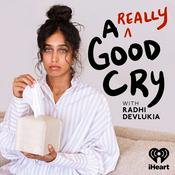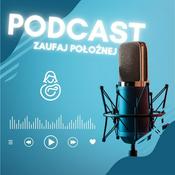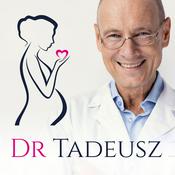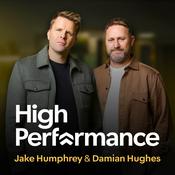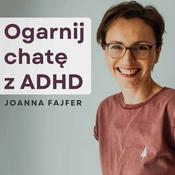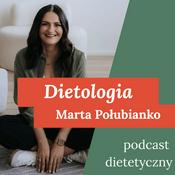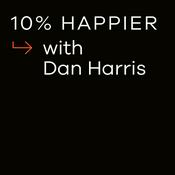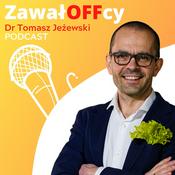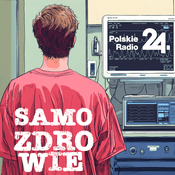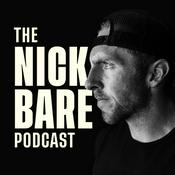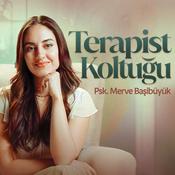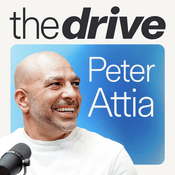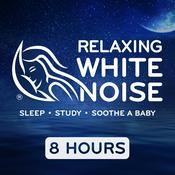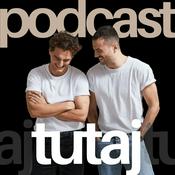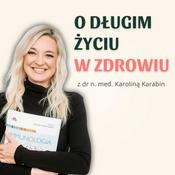975 odcinków
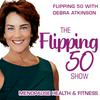
Fitness Trends For 2026 — Midlife Women’s Edition
02.01.2026 | 1 godz.
This episode is sponsored by Flipping 50 Menopause Fitness Specialist. Become a health & fitness coach who finally speaks midlife women’s language. Learn how to design workouts that balance hormones that actually get results for women in menopause. Connect with Flipping 50: Flipping50 Insiders Facebook Group Instagram - @Flipping50TV YouTube - @Flipping50TV References: ACSM 2026 Trends Report ACE 2026 Fitness Trends from Advisory Board Other Episodes You Might Like: Previous Episode - The Preconception Revolution Next Episode - When It's Not Calories in Calories Out, What Next? More Like This: What's Still Missing from Women's Fitness Programs Resources: Join Flipping 50 Menopause Fitness Specialist® to become a coach! Don’t know where to start? Book your Discovery Call with Debra. Leave this session with insight into exactly what to do right now to make small changes, smart decisions about your exercise time and energy. Forget the hype—let’s break down what really matters in 2026’s fitness trend reports. From AI-powered workouts to strength training for menopause, we’re going beyond the buzzwords to talk real-life application for women in midlife. Spoiler alert: if you’re over 40, you’re the trend. Every January, I give you my straight-shooting take on the year’s biggest fitness trends—and 2026 is no exception. We’re looking at two major lists: ACSM’s Worldwide Fitness Trends Survey, compiled from thousands of professionals who volunteer their opinions. ACE’s 2026 Trend Report, sourced from an advisory board of industry experts who’ve interpreted what they’re seeing in the field and where it’s going. This isn’t about chasing every shiny object. It’s about figuring out what actually supports health, strength, and joy in your 40s, 50s, and beyond.

The Preconception Revolution
30.12.2025 | 45 min.
Other Episodes You Might Like: Previous Episode - Why Those Holiday Meals Make You Miserable (It’s Not the Calories) More Like This - Better Sex In Menopause and Beyond Resources: Get Dr. Ann Shippy’s Book: The Preconception Revolution: A Science-Backed Path To Your Fertility and Generational Health!! Don’t know where to start? Book your Discovery Call with Debra. Leave this session with insight into exactly what to do right now to make small changes, smart decisions about your exercise time and energy. The Preconception Revolution isn’t about getting pregnant—it’s about creating the healthiest possible future for the next generation, long before conception ever happens. Let’s go into why fertility challenges are often a signal of deeper health issues, not just age or bad luck. You’ll learn how environmental toxins, gut health, nutrition, and lifestyle choices in both women and men directly impact fertility, pregnancy outcomes, and a child’s lifelong health. This conversation is especially for midlife women who care deeply about their kids, grandkids, and the legacy of health they leave behind. If you’ve ever wondered what you wish you’d known sooner—or what your adult children need to know now—this episode delivers the why behind The Preconception Revolution. My Guest: Dr. Ann Shippy, MD is a board-certified internal medicine physician and certified functional medicine practitioner who is a leading voice in the preconception movement—focused on optimizing health before pregnancy to influence lifelong and generational wellness. A former chemical engineer at IBM, she brings a systems-based, science-driven approach to uncovering root causes of infertility and chronic disease. She is the author of The Preconception Revolution, a science-backed guide helping men and women prepare their bodies for healthy pregnancies. Through her Austin-based practice and online programs, Dr. Shippy has helped couples conceive healthy babies well into their 40s using advanced testing and precision strategies. Her work has been featured in major media outlets and on national stages including TEDx and leading wellness conferences. Questions We Answer in This Episode: [00:06:15] How did you move from being known as “the mold doctor” into preconception and fertility work? [00:11:14] Is the fertility crisis really about age? What if fertility is not the problem—but a signal of overall health? [00:13:03] What should women be doing during the preconception window—three to 36 months before pregnancy? [00:15:58] How important are air quality and water safety when preparing for pregnancy? [00:18:33] What do men need to be doing to support fertility and a healthy pregnancy? [00:28:15] Why are chronic conditions like autism, autoimmunity, and ADD increasing—and what does preconception health have to do with it? [00:39:14] What are the most important first steps parents—or future grandparents—can take right now?

Why Those Holiday Meals Make You Miserable (It’s Not the Calories)
26.12.2025 | 32 min.
Connect with Flipping 50: Flipping50 Insiders Facebook Group Instagram - @Flipping50TV YouTube - @Flipping50TV Other Episodes You Might Like: Previous Episode - How to Rewire Your Brain for Energy, Focus, and Longevity After 50 Next Episode - The Preconception Revolution More Like This: 7 Simple Interval Training Workouts for the Holidays Holiday Recipes Green Bean Casserole | Dairy & Gluten Free One Pan Chicken Veggie Cauliflower Rice Bowls 12 Days of Smoothies: Peppermint Patty Smoothie 12 Days of Smoothies: Flipping 50 Thin Mint Smoothie 12 Days of Smoothies: Chocolate Bliss Resources: Join Flipping 50 Menopause Fitness Specialist® to become a coach! Don’t know where to start? Book your Discovery Call with Debra. Leave this session with insight into exactly what to do right now to make small changes, smart decisions about your exercise time and energy. If holiday meals make you miserable, and for many women in midlife, it has nothing to do with calories or self-control. In this episode of Flipping 50, know how hormonal changes, reduced digestive enzymes, and a lifetime of exposure to certain foods can turn traditional holiday meals into a perfect storm for bloating, inflammation, and digestive distress. You’ll hear why foods like gluten, dairy, and even eggs can suddenly become harder to tolerate, especially when they’re layered together at one meal. Holiday meals make you miserable when digestion, hormones, and food sensitivities are ignored—but don’t have to when you know how to plan differently.

How to Rewire Your Brain for Energy, Focus, and Longevity After 50
23.12.2025 | 50 min.
This episode is sponsored by Flipping 50 Menopause Fitness Specialist. Become a health & fitness coach who finally speaks midlife women’s language. Learn how to design workouts that balance hormones that actually get results for women in menopause. Other Episodes You Might Like: Previous Episode - Questions to Ask Your Menopause Fitness Coach (& Questions a Coach Should Ask You) Next Episode - Why Those Holiday Meals Make You Miserable (It’s Not the Calories) More Like This - Heal Your Gut, Save Your Brain Resources: Book your Discovery Call with Debra. Leave this session with insight into exactly what to do right now to make small changes, smart decisions about your exercise time and energy. Understand how sleep relates to your hormones, muscle mass and weight loss with Flipping 50 Sleep Yourself Strong. For eye and brain health, Debra recommends Screenfit. Rewire your brain for energy and discover why feeling tired, foggy, or flat after 50 is not “just aging” — it’s often a nervous system issue hiding in plain sight. In this episode, we dig into how your brain, body, and lifestyle are constantly talking to each other, shaping your energy, focus, sleep, and resilience in midlife. You’ll learn why mindset alone isn’t enough, how stress and recovery actually reprogram your brain, and where many well-meaning wellness habits are silently working against you. If you’re ready to stop powering through and start working with your biology, it’s time to rewire your brain for energy. My Guest: Dr. Patrick K. Porter, Ph.D., is the founder and creator of BrainTap®, a pioneering brainwave entertainment technology designed to optimize mental performance, reduce stress, and improve sleep. With over four decades of experience in neuroscience and personal development, Dr. Porter has authored multiple books and guided millions worldwide in harnessing the brain’s neuroplasticity to live healthier, more vibrant lives. His latest book, The Brain Fitness Blueprint (releasing October 21, 2025), explores how to train the brain for clarity, resilience, and sustainable energy at any age. Questions We Answer in This Episode: [00:09:37] What is brain harmonizing? [00:14:35] How do we start having a “mindset”? [00:16:53] What is the gut brain? [00:24:53] How can someone make changes on how they think [00:29:50] How can someone be aware of their thoughts? What do we do with negative thoughts? [00:33:20] How can listeners use technology like BrainTap to support long-term brain and body health? [00:38:25] What do screens and AI do to us?

use-fitness-coach Questions to Ask Your Menopause Fitness Coach (& Questions a Coach Should Ask You)
19.12.2025 | 45 min.
This episode is sponsored by AirDoctor. Head to https://AirDoctorPro.com and use promo code FLIPPING50 to get UP TO $300 off today! AirDoctor comes with a 30-day money back guarantee, plus a 3-year warranty—an $84 value, free! Other Episodes You Might Like: Previous Episode - Women's Health Researcher Abbie Smith-Ryan on Protein & Exercise for Longevity Next Episode - How to Rewire Your Brain for Energy, Focus, and Longevity After 50 More Like This - 5 Menopause Fitness Questions You Want Answered Resources: Join Flipping 50 Menopause Fitness Specialist® to become a coach! Don’t know where to start? Book your Discovery Call with Debra. Leave this session with insight into exactly what to do right now to make small changes, smart decisions about your exercise time and energy. Join the Flipping50 Insiders Facebook Group. Connect with other women navigating menopause fitness and get daily tips and support. Ask your menopause fitness coach the right questions, and everything about your workouts — and your results — can change. Hiring a fitness coach during menopause isn’t about finding someone who can make you sweat — it’s about finding someone who understands how hormonal changes affect recovery, muscle, fat loss, bone, and energy. Menopause shifts recovery, exercise volume, protein needs, and even which workouts can quietly work against you. If you want smarter training instead of harder training, this episode will redefine how you ask your menopause fitness coach.
Więcej Zdrowie i Fitness podcastów
Trendy w podcaście Zdrowie i Fitness
O The Flipping 50 Show
Słuchaj The Flipping 50 Show, Dietetyka oparta na faktach i wielu innych podcastów z całego świata dzięki aplikacji radio.pl

Uzyskaj bezpłatną aplikację radio.pl
- Stacje i podcasty do zakładek
- Strumieniuj przez Wi-Fi lub Bluetooth
- Obsługuje Carplay & Android Auto
- Jeszcze więcej funkcjonalności
Uzyskaj bezpłatną aplikację radio.pl
- Stacje i podcasty do zakładek
- Strumieniuj przez Wi-Fi lub Bluetooth
- Obsługuje Carplay & Android Auto
- Jeszcze więcej funkcjonalności


The Flipping 50 Show
pobierz aplikację,
zacznij słuchać.
